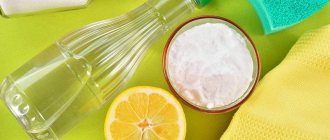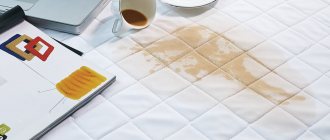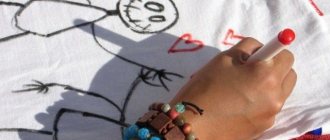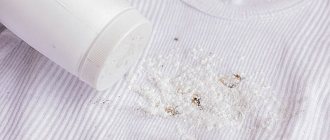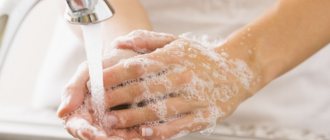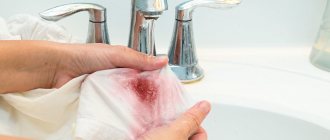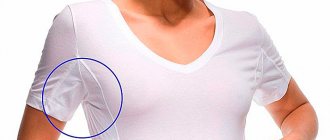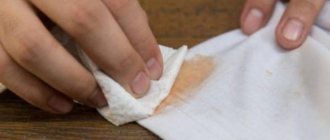Children love to sculpt with plasticine and get great pleasure from this activity. The only downside to this childhood hobby is that removing stains from the sticky mass is not at all easy. All mothers wonder how to remove plasticine from carpet or clothes, because even with careful handling, small particles stick to the fabric and smear. Some people suggest freezing the curd and scraping off the hardened plasticine; in other cases, steaming with a hot iron will help. The main thing is not to put the soiled item straight into the machine, otherwise you won’t be able to get rid of the stain.
Let's find out which method is suitable for a particular case and how to properly clean the sticky mass from clothes. But first, let's remove the viscous excess with the blunt side of a knife or a scraper. If this is not done, the mass will become firmly embedded in the fibers.
How and with what to remove stains from plasticine
The problem is not in removing the plasticine from the surface of the clothing, but in further eliminating the color imprint. The thick mass is cleared using both cold and heat. Use an iron to remove stubborn dirt from knitwear. First, apply a dry, clean cloth, and steam the top or lightly touch it with an iron. The napkin with the plasticine print is thrown away and a new one is taken, repeating until the napkin remains clean. You can use a hot hair dryer instead of an iron, which is more suitable for delicate fabrics, including those with pile.
The iron and napkin method should not be used for dense materials (for example: denim). In this case, it is better to freeze the plasticine. It will not have time to penetrate the fibers of the fabric and will be easily removed when hardened. And then plasticine stains from clothes are removed using accessible methods - using household chemicals or improvised means.
The problem is that the consistency of plasticine is very thick and it is not always possible to remove stains from clothes at home. In this case, contact the dry cleaner. But not all pollution is difficult to remove. Small prints can be removed yourself. Let's find out how to wash plasticine using ready-made detergents and stain removers.
Household chemicals
You can wash plasticine with the same method as grease stains. Budget household chemicals come to the rescue - Antipyatin, Maxima. For more stubborn stains, Vanish is suitable, and housewives advise using a powder stain remover - with it you can remove both fresh plasticine and old stains. After treatment with stain remover, the product must be washed.
Sarma Active 5 in 1 universal powder is suitable for different types of fabrics. With its help, you can remove prints on denim trousers or a chiffon blouse. The beauty of the stain remover is that it starts working at low temperatures - 30 - 40 ᵒC. But this is the recommended temperature for most delicate fabrics.
Another popular product that has proven effective in combating plasticine stains is Amway stain remover. This is a fairly strong composition that is not used on wool and silk. Also, many housewives consider its price too high, and therefore choose budgetary funds and traditional methods.
Folk remedies
Methods proven by housewives will tell you how to effectively clean plasticine from clothes at home. One of the best ways to remove stains is vegetable oil in combination with dishwashing gel. To clean clothes from plasticine, you need to soak a cotton pad in oil and carefully walk over the print. Oil dissolves the fats that make up plasticine and removes them. As soon as the stain lightens, soak it generously with dish soap. After an hour, the product is washed.
In children, the sleeves of turtlenecks, sweaters and shirts are more likely to get dirty. How to wash plasticine in this case? You can try to remove the print with kerosene. It dissolves color marks, but leaves an unpleasant odor. After spot treatment and stain removal, the product is soaked and washed separately from other items. Clothes are washed repeatedly with running water, then washed with powder and conditioner.
Other methods of removing contaminants include:
- ammonia - ammonia is used to remove various contaminants, including plasticine. It is necessary to make a weak solution at the rate of 10 drops per 200 ml of water. Saturate the stain with the product and rub from the periphery to the center. If the contamination is difficult to remove, do the following: dilute 4 tsp. ammonia in 2 liters of water and soak the item for 30 - 40 minutes, then rinse and wash with powder;
- baking soda - the stain is first washed, then sprinkled thickly with baking soda and left for half an hour. If the fabric is dense and not afraid of mechanical stress, it can be rubbed well. Then the soda is washed off and the product is washed;
- wool sock – this unusual method has proven to be effective, but you need to be sure that the sock used for cleansing is made of natural wool. And the value of the cleaned product should be higher than a woolen sock, since the latter is thrown away after the procedure. There is no need to wash the stain first; rub it in a circle with a woolen sock stretched over your hand until the remaining plasticine transfers to the wool.
Kerosene
Today, the substance is sold in purified form, so you don’t have to worry about the need to remove strong odors from clothes. Kerosene should be used with extreme caution as it can corrode the paint and structure of delicate fabrics. An effective way to clean plasticine stains:
- place the soiled product on a table or any other hard surface;
- wet a cotton swab with kerosene, wring it out, apply to the stain for 8-10 minutes (5 minutes is enough for delicate fabric);
- clean the remaining substance with dry wipes by repeated application;
- Wipe the cleaned area with a slice of lemon and wash the clothes as usual.
Fresh spots
Such a universal and affordable product as laundry soap can cope with fresh stains on any type of fabric. A third of the bar is grated and filled with water so that a thick foam forms. With its help, you can wash plasticine from dark and colored clothes. Soap removes dirt from delicate items less well, because the fabric can hardly be rubbed, but even in this case it will be beneficial, especially if the print is fresh. After 2-3 approaches, nothing will remain of the stain.
Remove mechanically
If the clay is soft and ironed, do not try to remove it. You'll only make it worse. Freezing will help - it contains paraffin - it hardens and crumbles at sub-zero temperatures. Once the material becomes brittle, it is easier to clean.
Freezing options:
- hang clothes on the balcony in winter;
- pack in a plastic bag and place in the freezer;
- Place an ice pack on your clothes.
Freezing time is from half an hour or longer. After freezing, clean the plasticine with the blunt end of a knife or pry it off with a blade. Work carefully to avoid damaging your clothing.
No way to freeze? Wait a day or two, the plasticine will dry out and begin to crumble.
Old stains
Now we’ll find out how to remove plasticine that has frozen for a long time. To begin with, it is heated and the excess is removed. You can remove dirt from jeans or bolognese pants with a mixture of soap and soda. Since the fabric tolerates friction well, after passing with a soapy brush, the print noticeably fades. The same kerosene or vegetable oil will help remove stubborn stains. The main thing is not to allow the fatty composition to be absorbed more strongly. Otherwise, the oil will have to be removed.
White
It is easier to remove stains from white clothes with a natural composition. You can use industrial stain removers and bleaches. Synthetic fabrics do not tolerate such treatment and require delicate cleaning. How to safely and quickly remove plasticine from clothes in this case?
You can remove stains from a shirt or shirt using ammonia and hydrogen peroxide. They are diluted in water and the stain is spot-treated. You can use the components simultaneously or one by one. They remove plasticine prints from white clothes of natural and mixed composition.
Stain removers
Special chemicals for removing various stains are a great way to clean plasticine from clothes if the recipes described above did not help. To remove a greasy blot left by plasticine, stain removers are used as follows:
- moisten the area of contamination with warm water;
- dilute the stain remover in a small container, following the instructions on the package (the proportions are different for each product);
- pour the prepared mixture onto the dirty area and leave for 20 minutes;
- Place the clothes in the washing machine, add another portion of stain remover and start the wash.
Colored clothes
It is more difficult to remove plasticine from colored clothes. Oxygen stain removers or ineffective but gentle homemade solutions - soap and soda - are suitable for this. Stains should be removed as quickly as possible, without allowing the composition to set. In this case, kerosene is practically not used, but vegetable oil can be useful, especially if the fabric is printed. Grease will help clean the plasticine mark, but you need to treat the print with dish gel as soon as possible to dissolve the grease stain.
To wash plasticine from colored clothes, you will have to use both household chemicals and improvised means. Only then will it be possible to bring the item into marketable condition.
Cotton and linen
Natural fabrics tolerate stain removers, ammonia, and hydrogen peroxide well. How to remove plasticine from denim pants? Isopropyl alcohol will help with this. It is used instead of ammonia, making a solution at the rate of 1 tsp. per glass of water. Moisten a sponge or cotton pad with the solution, go through the trousers point by point, gently rubbing the composition, wait until the stain discolors and wash off.
You can clean a denim jacket and other thick cotton items in a similar way. To remove stains from linen items, you should first try a mixture of laundry soap and soda.
Laundry soap
Laundry soap is often used to remove various types of dirt due to its high alkali content. To clean the fabric from plasticine residues, you need to prepare a highly concentrated solution. To do this, take a third of a bar of soap and dissolve it in three liters of warm water.
Soak the trousers in the prepared solution for half an hour. After 30 minutes, wipe the stain with a stiff brush and wash as usual.
Carpets and rugs
When working with plasticine, things such as carpets and rugs often suffer; you can remove plasticine from the surface using a hairdryer. The stain is covered with a napkin and heated. This method will help clean rugs and long-pile carpets. However, synthetic carpet may not survive heat. How to get rid of plasticine from the carpet and remove color prints in this case? You can try white spirit or acetone, but first test it on an inconspicuous area.
Not knowing how to remove wax plasticine from the carpet and remove remaining pigment can make the situation worse. The sunflower oil cleaning method, which is suitable for clothing, is not always applicable to floor coverings. It is quite possible to remove plasticine on a carpet with oil, but what about a greasy stain? If the gel for greasy dishes does not take it, the contamination will be even greater than from plasticine.
Isopropyl alcohol
This method of cleaning plasticine is only suitable for cotton items. You cannot use alcohol on other materials, as this will ruin them. To clean a sticky stain:
- place damaged clothing on a hard surface;
- moisten the area of contamination with a few drops of alcohol;
- after a minute, wash off the remaining alcohol from the item;
- wash the product immediately after this.
Isopropyl alcohol is a flammable substance; any interaction with it must be carried out in compliance with safety rules. It is necessary to work with liquid and store it away from open flames and sources of high temperatures. Alcohol quickly evaporates when mixed with air, and at high concentrations forms an explosive composition, so work with the substance should be carried out in well-ventilated areas. In addition, wear gloves - with prolonged contact with skin, alcohol can cause chemical burns.
Cushioned furniture
If the mass gets on upholstered furniture, then you can deal with it with car foam. The method is quite controversial, so before cleaning the composition is tested in an inconspicuous area. How to remove plasticine without using “chemistry”? Soda paste removes marks from a sofa and other upholstered furniture quite well. Baking soda is slightly diluted with water to obtain a thick consistency. The composition is applied, wait until it dries, and remove with a vacuum cleaner or dry brush. This method can remove both plasticine and other contaminants.
Dear readers of the Tkan.Club website, if you still have questions on this topic, we will be happy to answer them. Leave your reviews, comments, share stories if you have dealt with plasticine stains! Your life experience may be useful to other readers.
If your black trousers are dirty
Most often, school uniforms suffer from plasticine. Children wipe their dirty hands not on a napkin, as expected, but on their knees, because of this, clearly visible multi-colored marks remain on their black trousers. You need to clean the dark fabric carefully so as not to leave abrasions on it from the use of brushes, oil and greasy marks from folk remedies.
Instructions on how to remove plasticine from black trousers:
- The product must be turned inside out.
- The trousers are laid out on a flat surface; it is advisable to use an ironing board.
- Thin napkins are placed on the plasticine stains: one on top, the second on the bottom under the fabric. Blotting or toilet paper rolled into several layers is suitable.
- Set the iron to the “Silk” mode; if there are no automatic modes, heat it to a low temperature without generating steam.
- Iron the product over napkins. Traces from plasticine melt and are gradually transferred to paper.
- Remove the napkins and replace them with new ones.
- The procedure is performed until the spots disappear.
- Washing is carried out at the treatment site. For this:
- make a soap solution from water and laundry soap;
- place the trousers in it so that the stain is in the liquid;
- soak for 30 minutes.
- Take a clothes brush and, for better results, additionally clean traces of plasticine.
- The final stage is washing the trousers with powder, taking into account the mode and method of washing. They are always indicated on the product label.
To ensure that black trousers remain as rich for a long time, do not change color to gray or dark blue and do not fade, special compounds are added when washing. To preserve the structure of fabric fibers and color, Perwoll Advanced Black liquid is suitable for dark and black items. It can be applied directly to clothing or poured into the powder compartment of the washing machine. After washing, children's pants look new and have no traces of sticky material.
